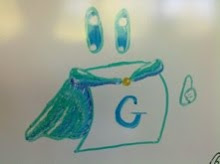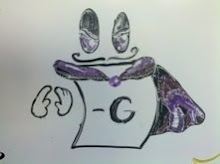Finding gadgets is tough, sometimes especially when dealing with the sort of grid-geometry of the NoGo board. Thus, I took a step backwards and considered NoGo played on a general graph. The rules to this game are still the same: each connected subgraph where all vertices have the same color must be adjacent to a vertex in the graph which is uncolored. Still, I had no luck finding a PSPACE-complete reduction. Instead, I took another step backwards and considered showing NP-hardness for Graph NoGo.
Woohoo! Success! Here is the plan for this proof: we will reduce from the Independent Set problem, known to be NP-hard. Given an instance of the Independent Set Problem (G, k), construct a Graph NoGo situation, G', that only the black player can move on, where each play corresponds to choosing a vertex in G, the original graph, to be part of the independent set. If the black player can make k plays on the new game, G', then there will exist a corresponding independent set of k vertices on G. To turn this into a Graph NoGo situation where the only question is: "Can the black player win if they are playing next?" instead of "Can the black player make k plays?" we will add (k-1) unconnected nodes where only the White player can move. Now, in order for Black to win, they must be able to make k (or more) plays (assuming they are going first).
So, there are two things to show. First, we need gadgets in Graph NoGo where only one of the players can play. Second, we need to be able to glue those pieces together so that playing in one of these locations means you can't play in an "adjacent" one. As it turns out, neither of these is terribly hard.
As above, if G is our graph for the Independent Set problem, then for each vertex in G, we will use the following gadget for our game of Graph NoGo:
Here, x is the place Black can choose to play their stone in. The only other blank spot cannot be played by either Black or White. Notice that White cannot play on vertex x.
Now, for each edge in G connecting two vertices, we will connect only the x vertices of the gadgets with another gadget:


One nice property of this reduction is that it preserves planarity of the graph. Thus, if Independent Set is hard on a planar graph (is it?) then so is Graph NoGo.
So, how do we now take either of those two steps forward, to reach a PSPACE result or an actual NoGo result? Perhaps next week...




No comments:
Post a Comment